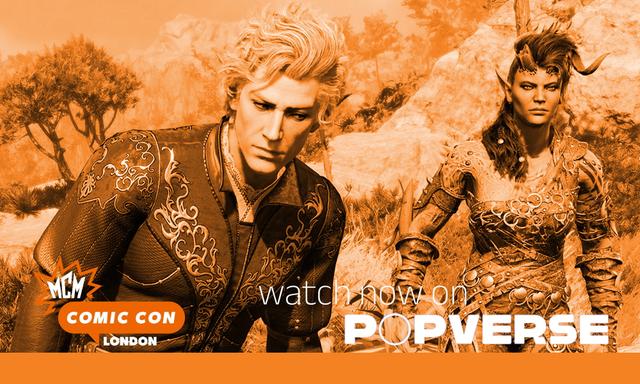If you click on a link and make a purchase we may receive a small commission. Read our editorial policy.
Superman: How the Daily Planet changed the superhero game
The Daily Planet is more than a staple in the Superman mythos - it's also a foundational trope in the superhero genre

One of the most enduring and vital elements in the numerous iterations of the Superman mythos is Clark Kent’s civilian career as an investigative journalist. The idea of Superman maintaining an alter ego and working for a newspaper is present right from the character’s debut in 1938’s Action Comics #1, but it is under somewhat different circumstances than subsequent depictions. For one, the name of the newspaper is completely different (Daily Star) for the first two years of Superman’s adventures, before taking on the more memorable Daily Planet moniker which still stands over 80 years after its introduction.
More than just giving Superman a job when he’s not out there saving the world, the idea of a superhero working as a journalist, or at least being associated closely with the journalism industry, makes the concept of The Daily Planet enormously influential in superhero stories. The Daily Planet not only becomes a staple in the Superman mythos across its extensive history and multimedia adaptations, but it is also echoed in different ways by different superheroes, both in the DC and Marvel Universe. And throughout the Daily Planet’s existence, the various changes to the wider Superman franchise are most visibly reflected through Clark’s evolving role with the news organization.
Here is how Clark Kent’s journalism career takes shape in its early years, the evolution of the Daily Planet in its lengthy history, and how the Daily Planet has become a foundational trope within the superhero genre.
From Daily Star to Daily Planet

In Action Comics #1, Clark is a journalist for the Daily Star, working alongside Lois Lane under editor-in-chief George Taylor. The Daily Star name comes from the Toronto Daily Star, where Superman co-creator Joe Shuster worked as a newsboy before his family relocated to Cleveland, Ohio in 1924. However, after Superman’s success and national newspapers began running daily comic strips starring the character, the Daily Star was rebranded as the Daily Planet in 1940’s Action Comics #23, without an in-universe explanation.
The popular Superman radio show also makes key changes subsequently adopted by the comic books, including the addition of two prominent Daily Planet personnel. After Daily Planet editor-in-chief Perry White is introduced on the radio show in February 1940, he abruptly replaces Taylor in the comics, starting with Superman #7 in November of that year. Similarly, Jimmy Olsen is introduced on the radio show in April 1940 before debuting in the comics in that year’s Superman #13, though an office worker resembling Jimmy, albeit unnamed at the time, is glimpsed as far back as 1938’s Action Comics #6.
A couple decades later, The Daily Star is retroactively restored to the DCU canon with the creation of the DC multiverse. In this expanded continuity, the Daily Star is Metropolis’ main newspaper on Earth-2, where Clark eventually is promoted to the role of editor-in-chief. In the main DCU continuity, the Daily Star and George Taylor resurface as competitors to the Daily Planet in Metropolis, with Clark and Lois’ prior employment there canonically erased in this universe.
Changes to ownership and media

For much of its early history, the Daily Planet provides Clark and the Superman supporting cast with a valid reason to regularly be in harm’s way as they visit crises and investigate shadowy figures to break news stories.
However, the biggest change to come to the news organization since its retooling to match the radio show in 1940 occurs in 1971’s Superman #233. Businessman Morgan Edge buys the Daily Planet and incorporates a local news television station into the organization. Clark becomes the evening news anchor for a time, joined by his childhood friend Lana Lang, though Edge himselfl is eventually discredited after his ties to the crime syndicate Intergang are revealed.
Even later down the line, in an effort to punish the Daily Planet for its unfavorable coverage of his activities, Lex Luthor buys the news organization in the ‘90s and lays off most of the staff. Later, Bruce Wayne steps up to purchase the Daily Planet, effectively making it a subsidiary of Wayne Enterprises, and entrusting care of its daily management back to Perry White. Over the years, the Daily Planet reflects changes to the journalism industry, including branching to online publication and incorporating bloggers into its staff, though the print newspaper remains a prominent part of the business.
The current state of the Daily Planet

At the start of the Dawn of DC era, spinning out of the 2022 crossover event Dark Crisis on Infinite Earths, Luthor telepathically erases Superman’s identity as Clark Kent from everyone’s minds. Moreover, he adds a failsafe that causes anyone who relearns Superman’s secret identity to die from telepathic feedback - thus preventing Clark from sharing his secret to the world again. After stumbling in on Clark in his costume, Perry nearly dies from Luthor’s scheme, with Lois stepping in to become the new editor-in-chief of the Daily Planet for the foreseeable future.
Beyond the comic books, the Daily Planet remains a major presence in different multimedia depictions of Superman. The recent animated series My Adventures with Superman reimagines Clark, Lois, and Jimmy as being the same approximate age and working at the news organizations as interns. The CW live-action series Superman & Lois begins with Clark and Lois quitting the Daily Planet in protest of Morgan Edge’s acquisition of the newspaper, with the couple maintaining their journalism careers by writing for the Smallville Gazette instead. And though the Daily Planet is not currently confirmed for James Gunn’s upcoming Superman: Legacy, it would be hard to imagine a version of the DCU without Clark and Lois working for it.
The Daily Planet’s wider superhero influence

Similar to Superman's impact on launching the superhero genre, the journalism industry has also become a fixture in the superhero genre. Bruce Wayne’s first major girlfriend in the comics is Vicki Vale, a reporter for the Gotham Gazette whose occupation occasionally causes Batman to have to intervene to rescue her. Fellow DC heroes the Creeper and the Question both hold civilian jobs as journalists, often in the form of television platforms where they can share their outspoken views like political pundits. Barry Allen’s wife Iris West is a lead reporter in Central City who, like Lois Lane and Vicki Vale, finds herself frequently in danger because of her job, necessitating timely assistance from the Flash.
True to its tone, the Marvel Universe provides a more grounded and working class take on the journalism trope within the superhero genre. The Daily Bugle is the leading newspaper in New York City, with Peter Parker working for them as a photojournalist for much of his comic book history. Just as Clark capitalizes on writing about his exploits as Superman for the Daily Planet, Peter takes advantage of his Spider-Man alter ego to sell photographs to the Daily Bugle for publication. In a more cynical twist, Daily Bugle editor-in-chief J. Jonah Jameson uses the newspaper to run a citywide smear campaign on Spider-Man, rather than celebrating the hero as the Daily Planet does.
In terms of civilian jobs that heroes can have that organically insert them into a given incident, journalism is the one that is certainly among the most convenient. Lawyer (Daredevil) or police officer (the Flash) connects the heroes closer to crime as an extralegal extension of the justice system, but also carries a heightened sense of blurred lines with them because of the closer association.
Journalism is free of those strings, and is an occupation that really begins with Superman. An argument could be made that the Green Hornet is the first journalist superhero, but Britt Reid is a newspaper publisher, not a journalist whose out constantly trying to break stories. This places the Green Hornet closer in occupation to Batman than Superman, with Britt Reid similarly a wealthy playboy whose career finances his alter ego rather than heavily informing it.
The Daily Planet is as indelible a part of the Superman mythos as his supporting cast, indeed bringing most of them together with the shared drive to deliver truth, justice, and a better tomorrow. In doing so, every aspect of Clark Kent’s life, both personally and professionally, embodies this drive and has served as a cornerstone for the genre ever since.
For a recent spotlight on the Daily Planet, read Superman Annual 2023 #1. The issue is written by Joshua Williamson, illustrated by Mahmud Asrar, Edwin Galmon, Caitlin Yarsky, Max Raynor, and Jack Herbert, colored by Dave McCaig, Edwin Galmon, and Alex Guimaräes, and lettered by Ariana Maher.
Follow Popverse for upcoming event coverage and news
Find out how we conduct our review by reading our review policy
Let Popverse be your tour guide through the wilderness of pop culture
Sign in and let us help you find your new favorite thing.
















Comments
Want to join the discussion? Please activate your account first.
Visit Reedpop ID if you need to resend the confirmation email.